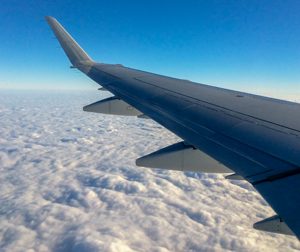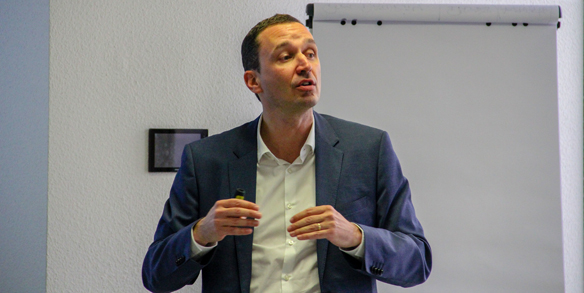
It’s all about giving customers what they want
MIKE DUNBAR
Is disintermediation heading for the mainline aviation industry, cutting the retail travel trade out of the relationship between the world’s major carriers and their customers?
That was the question that lurked in the background of a recent press presentation on “changing the passenger experience via digital change” delivered by Eric Leopold, IATA’s director of financial and distribution services transformation.
Leopold told reporters, “Digital transformation means we have to unlearn the recipe that made this industry successful in past decades, and carriers must move from legacy services to a full digital offering to give customers the experience they expect.”
That overall experience is currently being moulded by digital players such as Google, Apple, Facebook and Amazon, while outfits such as Uber, Airbnb and Google Flights are expanding their footprint across the customer travel experience; raising customers’ expectations of their interactions with airlines, he stated.
And he added that digital retailers have managed to build trust by offering a seamless shopping experience with zero-click payment and real-time information as the new status quo for digital purchases.
A digital future
“Those expectations have become the new normal and more and more, customers are expecting airlines to provide the same level of service,” Leopold argued.
 He declared, “Digital transformation is key to the future growth of the industry,” and advised that, in the short-term, enhanced processes such as automation and new processes should be looked at, while, in the mid-term new distribution and payment capabilities should be addressed, and further down the road even a change in business model could be in the cards.
He declared, “Digital transformation is key to the future growth of the industry,” and advised that, in the short-term, enhanced processes such as automation and new processes should be looked at, while, in the mid-term new distribution and payment capabilities should be addressed, and further down the road even a change in business model could be in the cards.
“What about Air Uber,” asked Leopold.
A CTP request for the transformation expert to expand on the possible effects on the retail travel sector was obligingly met by the vacationing Leopold, who found a fake Starbucks with WiFi in Lukla, Nepal – the start point for treks to the base camp of Mount Everest.
He texted, “Two decades ago, the Internet promised to enable direct sales and to remove all intermediaries across all industries. Today, intermediaries in air travel represent roughly 50% of bookings with online bookings on the rise.”
“The Internet revolution took place and strengthened intermediaries that went online for the simple reason that they added value to the customer experience.”
And he added reassuringly, “We would be wise to treat new technologies with caution; starting with what value they can add to customers, rather than betting the future on one or the other blocks in the value chain.”
A new order
Meanwhile, during his Geneva presentation, Leopold pointed out that IATA itself is working on a range of initiatives designed to improve the passenger experience.
He explained, “The fulfilment of orders started with paper tickets, which were then automated with electronic tickets. In the future, there will be no need for tickets: There will just be ONE Order.”
He added, “Customers are used to paying with credit cards, which were automated into electronic wallets. In the future, bank accounts will be connected directly, and there will be instant payments for those who don’t want to use credit cards. IATA will offer an instant payment solution called IATA Pay.”
And he explained, “In the past, passengers had to check in for a flight and get a paper boarding pass, which was automated into the mobile boarding pass. In the future, passengers will be identified using One ID without check-in or boarding pass.”
According to Leopold “not all airlines will move at the same pace in the digital revolution, but all understand that digital transformation cannot be avoided.”
He said “Some airlines are moving to digital projects, while others are still operating as airlines, but have created digital labs or incubators on top of their core activity. The most advanced airlines tend to define themselves as ‘digital companies flying airplanes’ or as giant start-ups.”
Those are the leaders of the digital transformation in the airline industry.
In his message from Nepal, Leopold told CTP, “Over the past three decades, airlines have used technology to automate physical or legacy processes, from revenue management and distribution to finance and ground ops.”
“However, some of the constraints of current processes are related to old physical or technical limitations. For instance, airline prices fall into 26 buckets because there are 26 letters in the alphabet and buckets are coded on one letter.”
And he declared, “Unlearning means forgetting how we have been doing things, such as pricing in buckets, not because they don’t work, but because technology enables us to reinvent processes and because customers expect seamless, personalized experiences that are available in other industries today.”

